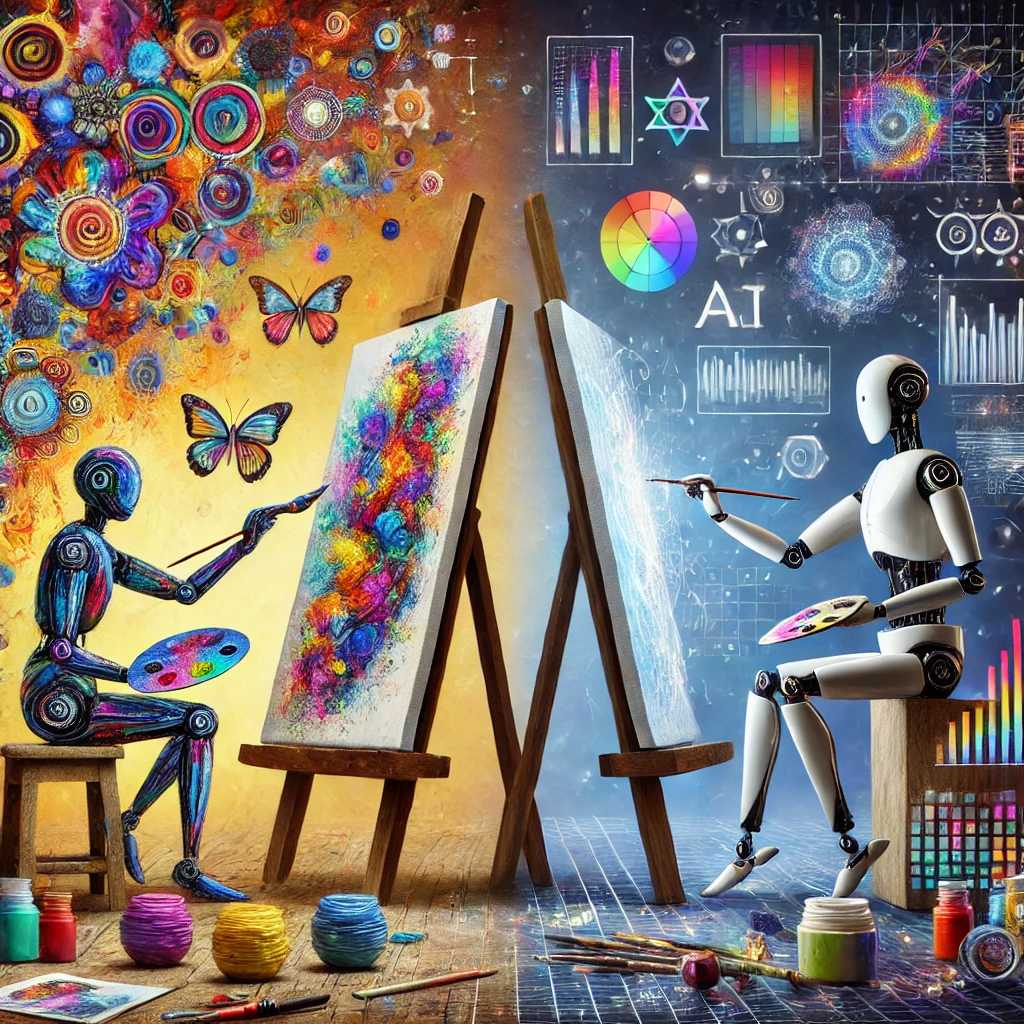
AI vs. Human Creativity: Will AI Replace Artists?
Posted on |
AI vs. Human Creativity: Will AI Replace Artists?
Artificial Intelligence (AI) has made significant strides in various industries, from healthcare to finance, and now, it’s entering the creative space. With AI-powered tools generating artwork, music, and even literature, a pressing question arises: Will AI replace human artists? This article explores the impact of AI on creativity, analyzing whether it is a threat or a tool that enhances human artistic expression.
Understanding AI in Creativity
AI in creativity refers to the use of machine learning algorithms, neural networks, and deep learning models to generate art, music, literature, and design. Popular AI-powered tools like DALL·E, MidJourney, and DeepDream can create stunning digital artwork, while OpenAI’s ChatGPT and Google’s Bard generate compelling written content. AI music composers like AIVA and Jukedeck produce melodies that mimic human compositions.
How AI Creates Art
AI creativity is based on pattern recognition and data analysis. These models are trained on vast datasets of existing human-made art, music, and literature. They analyze styles, techniques, and patterns to generate new pieces that resemble the works they were trained on. However, AI does not possess emotions, experiences, or personal inspirations—key elements that drive human creativity.
AI vs. Human Creativity: Key Differences
While AI can mimic human artistic styles, it lacks originality and emotional depth. Here are the major differences between AI and human creativity:
1. Emotion & Experience
- AI: Lacks emotions and personal experiences, generating art based on data and algorithms.
- Humans: Infuse emotions, thoughts, and life experiences into their work, creating unique and personal pieces.
2. Originality
- AI: Reproduces and remixes existing styles and patterns but does not create something entirely new.
- Humans: Innovate and break artistic boundaries by developing new techniques and styles.
3. Intent & Purpose
- AI: Generates content based on instructions and prompts but does not have intentions or artistic goals.
- Humans: Create art with meaning, messages, and emotions that resonate with audiences.
4. Adaptability
- AI: Learns from data but cannot adapt to real-world experiences or changes in personal perception.
- Humans: Evolve their creativity based on experiences, emotions, and cultural influences.
Can AI Replace Artists?
AI can assist in the creative process, but it is unlikely to replace human artists. Here’s why:
1. Art is More Than Aesthetic Appeal
- AI-generated art may look visually appealing, but it lacks the emotional and philosophical depth of human-created art. People connect with art because of the stories, struggles, and emotions behind it, which AI cannot replicate.
2. AI is a Tool, Not a Creator
- Many artists already use AI as a tool to enhance their work rather than replace their creativity. Digital artists, musicians, and writers use AI-driven tools to generate ideas, improve efficiency, and experiment with new styles.
3. The Demand for Human Creativity Remains High
- Brands, entertainment industries, and collectors value originality. Human-created art remains highly sought after because of its unique and personal touch.
4. Ethical & Copyright Issues
- AI-generated art often relies on existing artworks for training, leading to concerns about plagiarism and copyright infringement. Human artists bring authenticity that AI cannot legally or ethically provide.
AI in the Art World: Real-World Examples
AI-Generated Art Auctions
- In 2018, an AI-generated artwork titled Portrait of Edmond de Belamy sold for $432,500 at Christie’s auction house. While this was a historic moment, many art critics argued that the AI only mimicked existing styles without genuine creativity.
AI in Music
- AI music generators like AIVA help musicians create compositions by suggesting melodies and harmonies. However, AI-composed music still lacks the emotional depth and storytelling elements of human music.
AI-Assisted Writing
- AI tools like ChatGPT can generate poems, stories, and articles, but they lack the personal touch of human-written content. Authors and scriptwriters use AI for brainstorming ideas rather than full content creation.
The Future of AI in Art
The future of AI in art is not about replacement but collaboration. AI can:
- Enhance the creative process by providing inspiration and generating ideas.
- Automate repetitive tasks, allowing artists to focus on innovation.
- Help individuals without traditional artistic skills to express their creativity.
However, human artists will always remain at the forefront of creative expression due to their ability to tell stories, evoke emotions, and bring unique perspectives to their work.
Common FAQs
Conclusion: Will AI Replace Artists?
The simple answer is no. AI can generate art, music, and literature, but it lacks the emotional depth, originality, and purpose that human artists bring to their work. Instead of replacing artists, AI is more likely to serve as a powerful tool that enhances human creativity.
As technology continues to evolve, artists who embrace AI as a creative assistant rather than a competitor will find new opportunities for innovation. The true essence of art lies in human experience, storytelling, and emotional expression—qualities that AI, at least for now, cannot replicate.
Also See: How AI and Blockchain Can Work Together
